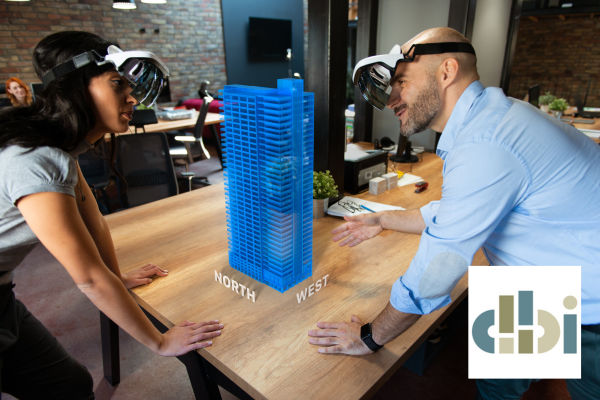
Technology has always played a transformative role in architecture and design. From drafting tools to 3D modeling software, advancements have continually pushed the boundaries of possibility.
One of the latest innovations making waves in these industries is Augmented Reality (AR). AR seamlessly blends virtual elements with the real world, offering a range of applications that are revolutionizing how architects and designers visualize and communicate their ideas.
One of the most prominent areas where AR is making a substantial impact is in the design and presentation of architectural projects. Traditionally, architects have relied on 2D drawings and physical models to convey their visions. AR introduces a new dimension by allowing architects to overlay virtual designs onto the physical environment. Augmented reality enables clients and stakeholders to experience and understand the proposed structure more fully and intuitively.
AR Enhanced Structures and Designs
AR reduces cost, saves time, increases communication, and improves stakeholder satisfaction. As a result, augmented reality has become integral to many architectural and design processes, from imagining unbuilt spaces to recalling historical structures.
An excellent example of AR’s impact on architectural design can be seen in the extended reality software developed by Trimble, a technology company specializing in construction and architecture. Using AR, Trimble created an application that allows architects and clients to walk through a building before construction commences. By visualizing the structure in real-time and at scale, stakeholders can better comprehend the spatial relationships, proportions, engineered infrastructure, and overall design aesthetics. Virtual interaction enhances communication, reduces misunderstandings, and leads to more informed decision-making.
AR Meets the Interior Design Process
AR also plays a significant role in enhancing the interior design process. Designers can use AR applications to superimpose virtual furniture, fixtures, and finishes onto a real-world space, empowering clients to visualize how different design elements will look and feel within their own environments. For instance, IKEA’s “IKEA Place” app utilizes AR to allow users to place furniture virtually in their homes, enabling them to assess the suitability of various pieces without physically purchasing or moving anything.
This application of AR not only streamlines the design process but also improves customer satisfaction by facilitating better-informed purchasing decisions.
Visiting Architectural Gems Virtually
Another fascinating aspect of AR’s impact on architecture and design lies in its ability to showcase unbuilt or demolished structures. AR’s capability to recreate and visualize architectural heritage has greatly benefited historical preservation and urban planning.
The “Reconstructing the Berlin Wall” project by the German government and the Berlin Wall Foundation employed AR to recreate sections of the wall in their original locations. Through mobile devices, users can experience the wall’s history and significance by exploring virtual reconstructions overlaid on the physical landscape. This AR application educates and engages the public, fostering a deeper understanding of architectural and cultural heritage.
AR Can Reveal Layout Within a Design
Beyond the design and presentation stages, AR also contributes to construction and building maintenance. By overlaying digital information onto physical structures, AR provides on-site workers with real-time instructions and visualizations, minimizing errors and improving efficiency.
The company DAQRI developed an AR helmet that displays essential construction data, such as plumbing and electrical layouts, directly from the worker’s field of view. This hands-free access to information streamlines the construction process, reduces rework, and enhances worker safety.
AR Continues to Influence
Whether experiencing unbuilt structures, visualizing interior designs, or aiding construction processes, AR continues to push the boundaries of what is possible in these industries. As technology continues to evolve, we can expect even more exciting applications of AR that will shape the future of architecture and design.